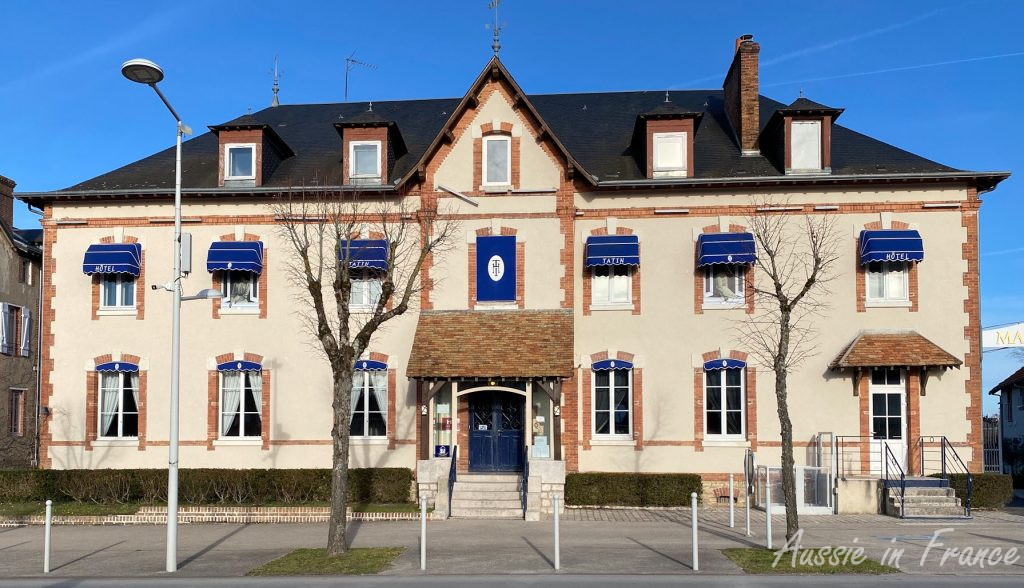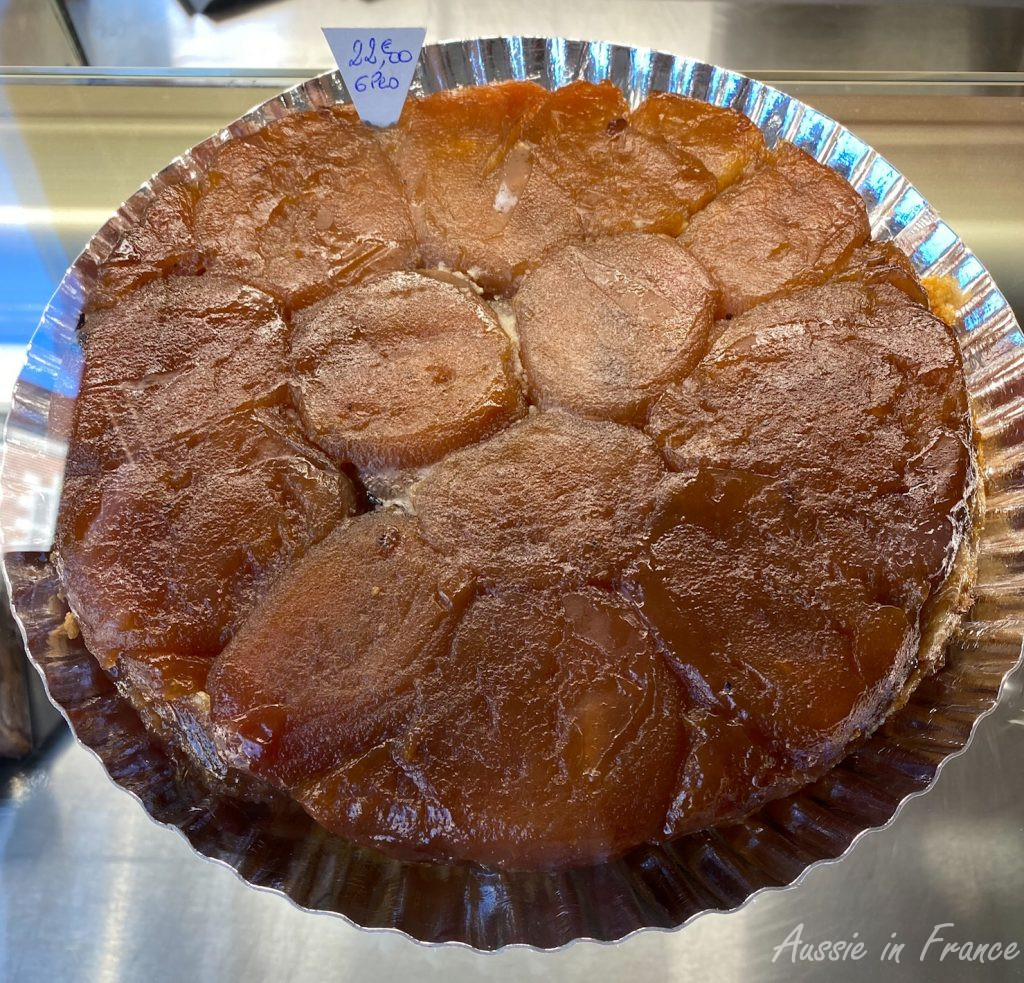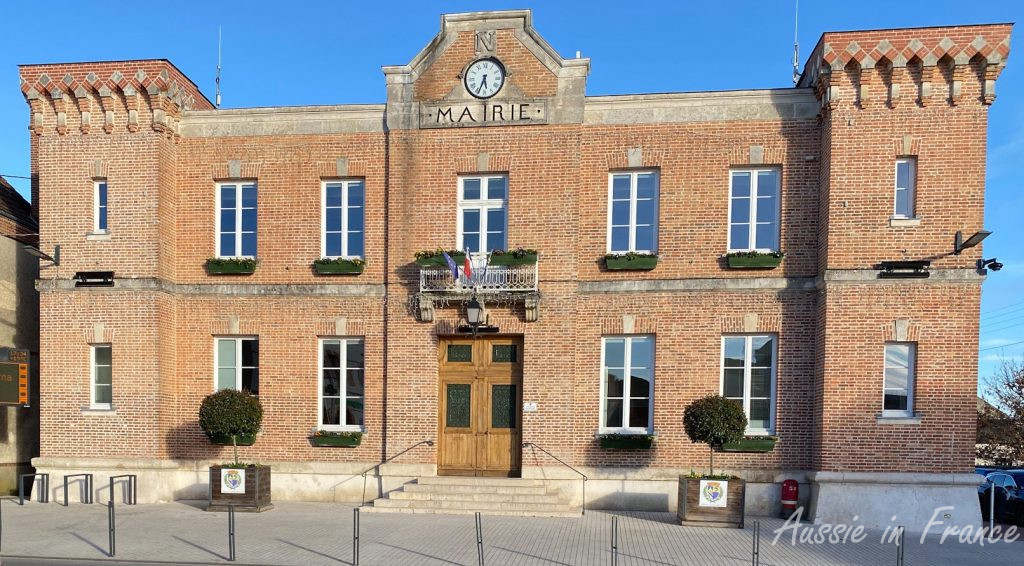The Tarte Tatin or upside-down apple cake is a very popular dessert in France, usually served warm with fresh cream. It is one of my favourites.
We are driving from Blois to Gien, where we are taking back a secondhand dishwasher which, sadly, does not work. We are usually more successful with leboncoin.com. At least the sellers are going to give us our money back but this is our second two-hour trip!

As we go through the town of Lamotte-Beuvron, I look up from my knitting (we are going to see my little grandson next month) and see a typical brick and stone building. It’s a hotel called Tatin. “Like the tart”, I say. “Yes”, says Jean-Michel, “I think that is where it comes from”. So I check out my phone. It does, indeed.
Tradition has it that two sisters, Stéphanie and Caroline Tatin, who ran a hotel in Lamotte-Beuvron at the turn of the 19th century just opposite the train station, invented the eponymous tart when Stéphanie, run off her feet by the hunting season that had just started, was making an apple tart and forgot to line the pastry mould and only put the apples in. When she realized her error halfway through cooking, she simply added the pastry on top of the apples and finished baking it.
Another version says she dropped a regular apple tart when taking it out the oven so served it upside down.
Even this doesn’t seem to be true. The tarte Tatin is a Sologne special from way back, popularized by the Tatin sisters in their hotel restaurant.
It was later served at Maxim’s in Paris where it is still a speciality today. The story goes that the chef from the iconic restaurant took a job as a gardener at the hotel Tatin so he could spy on what was going on in kitchen and “steal” the recipe.
So what is the secret? You are really supposed to use a copper tart case but I doubt if anyone really does. You grease the bottom of the pan with a generous amount of butter followed by a layer of granulated or powdered sugar.

Then you add firm apple wedges sprinkled with sugar. A thin layer of shortcrust pastry is then placed on top of the apples. Cook in a hot oven. Turn out and serve hot.
We decide to stop and take a photo on the way back as it will be 5 pm and time for tea and cakes by then.
After taking the photo, we drive into the town centre which I recognize from our previous visit. We had stopped for coffee at the local PMU café where they sell lotto tickets and you can bet on the horses. I never buy lotto tickets but I was feeling lucky so I bought a 2 euro one. I didn’t know how to play so I had to watch a video!!! And I won 4 euros so am able to pick up my winnings. The lady seems surprised that I don’t buy another ticket. But I reckon you should quit while you’re ahead ?.
We find a pâtisserie and ask if there is tarte Tatin. There is only one for six people which costs 22 euros so we buy some other individual cakes instead and eat them in the little square opposite the unusual-looking town hall.

At least the second dishwasher trip wasn’t entirely wasted …. Now I know where the Tarte Tatin comes from.




That looks delicious.
Hi Rosemary interesting history on the Tarte Tatin. Just discovered your Blog . I’m a Kneipp from Brisbane originally. I live in Tasmania now days.
Cheers
Michelle
Hi Michelle, thank you! Which branch of the family are you from?
My Dad is a Cousin of your Father. Not first Cousin though. My Dad’s Father was Frances James Kneipp and his Father was James Henry Kneipp. Rangers Valley Kneipps.
Right. I think some of your branch are up in Townsville